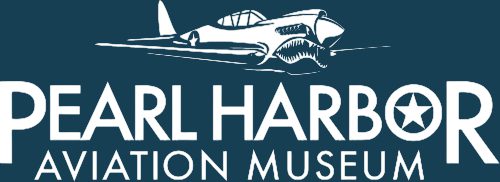Ready Room Blog
11/25/2024
Webinar: Before the Infamy
Before the Infamy: The First Air Raid on Pearl Harbor covers the Fleet Problem XIII, the 1932 naval exercise that foreshadowed the infamous attack on Pearl Harbor. This daring exercise saw aircraft carriers launch a surprise air raid on a fleet at anchor, challenging conventional tactics and reshaping naval strategy for decades to come.
Guest speaker Brad Ball and moderator, Museum’s Senior Manager of Education, Lt. Col William “Spin” Spincola, USAF (Ret.), take us through the groundbreaking details of Fleet Problem XIII, uncovering a rarely discussed chapter in history.
Due to time constraints, some questions went unanswered in the webinar.
These questions were submitted by attendees and answered after the webinar by Brad Ball.
What were the names of the US Navy aircraft carriers used in Fleet Problem XIII?
USS Lexington CV-2
USS Saratoga CV-3
USS Langley CV-1
The Lexington and Saratoga were in the Blue Fleet striking force. The Langley was part of the Black Fleet defending enemy force.
The USS Ranger CV-4 was commissioned into navy service in 1934 and thus was not available for the 1932 Fleet Problem XIII
Why did the American public not respond to the growing pre-war danger to the fleet at Hawaii and is there any lessons we can apply for today?
First, the American people did not perceive there was any danger to the fleet in Hawaii in 1941. In fact, the American people and their government estimated the US Fleet in Hawaii was a powerful deterrent to any hostile intentions from Japan. Throughout the two decades of the inter-war period, the US Army defensive preparations in Hawaii were believed to be formidable and more then adequate to protect Hawaii from attack.
The lesson for today is not to confuse unclear enemy intentions with known enemy capacities. Do not dismiss away as unlikely a potential enemy course of action that does not fit your preconceived vision of future events. A nation must plan for the enemies most dangerous course of action not the most likely. This is the lesson of Fleet Problem XIII.
So, what was the plan of action for Fleet Problem XIII in the Pacific? How did the problem play out?
The January to February 1932 Grand Joint Army-Navy Exercise 4 (GJE-4) called the Blue force (US) to recapture Hawaii from the Back force (unnamed-Japan) that had captured it earlier. Fleet Problem XXIII, March to April 1932, was the naval component of this joint wargame. Admiral Yarnell was in command of the Blue striking force. This force included the aircraft carriers Lexington and Saratoga. Yarnell and his chief -of-staff Captain John Towers, developed an unconventional plan to prove the value of the carrier and its associated air wing as an effective offensive weapon. The two carriers and just four destroyer escort broke off from the main battel force and proceeded at very high speed to Hawaii as an advance raiding force. 100 miles north of Oahu, the carriers launched 152 aircraft in two waves just before dawn on Sunday, 7 February 1932. Yarnell’s strike aircraft approached from northeast of the island and were undetected until they begin thief attack. The air strike force achieved total surprise over all military instillations on Oahu. Attacking aircraft dropped flour-bag bombs on the warships in Pearl Harbor. The attack was clearly a spectacular success. Army and Navy exercise umpires judge that all Army aircraft had been destroyed and all Navy warships at Pearl Harbor had been sunk.
I heard that there would have been more Japanese killed if war kept on than what the bomb killed?
If I remember correct, at least some of the US battle ships were being rotated between Pearl Harbor and Kahului harbor, Maui prior to the attack. Do you think the outcome of the attack or war would haver differed if the Japanese had to split their attack between Pearl and Kahului harbors?
Yes, you are correct. Up until 1942, the Navy used Lahaina Roads in the Au’au Channel as Fleet Anchorage. The Lahaina Roadstead is a deep-water anchorage. The Battle Fleets presence at Lahaina Roads in these years was so regular that on Dec 7, 41, the Japanese conducted a recon of the Roadstead before the launch of the first wave strike. Two long range scouting aircraft (Aichi E13A Jake) were catapulted from the cruiser Tone one hour before the first wave of strike aircraft launched from their carriers to confirm the location of the Fleet in ether Perl Harbor or in the Au’au Channel It was thought the US aircraft carrers may be in that location.
If any US warship had been attacked and sunk in the Au’au Channel it would have been a total and catoptric loss of the ship. Lahaina Roads is a deep anchorage, so deep that a sunken ship would be beyond salvage and recovery a total lose. With the exception of the battleships Arizona and Oklahoma, the ships sunk inside of Pearl Harbor were salvaged and recovered and even though taking many mouths, repaired and returned to service.

